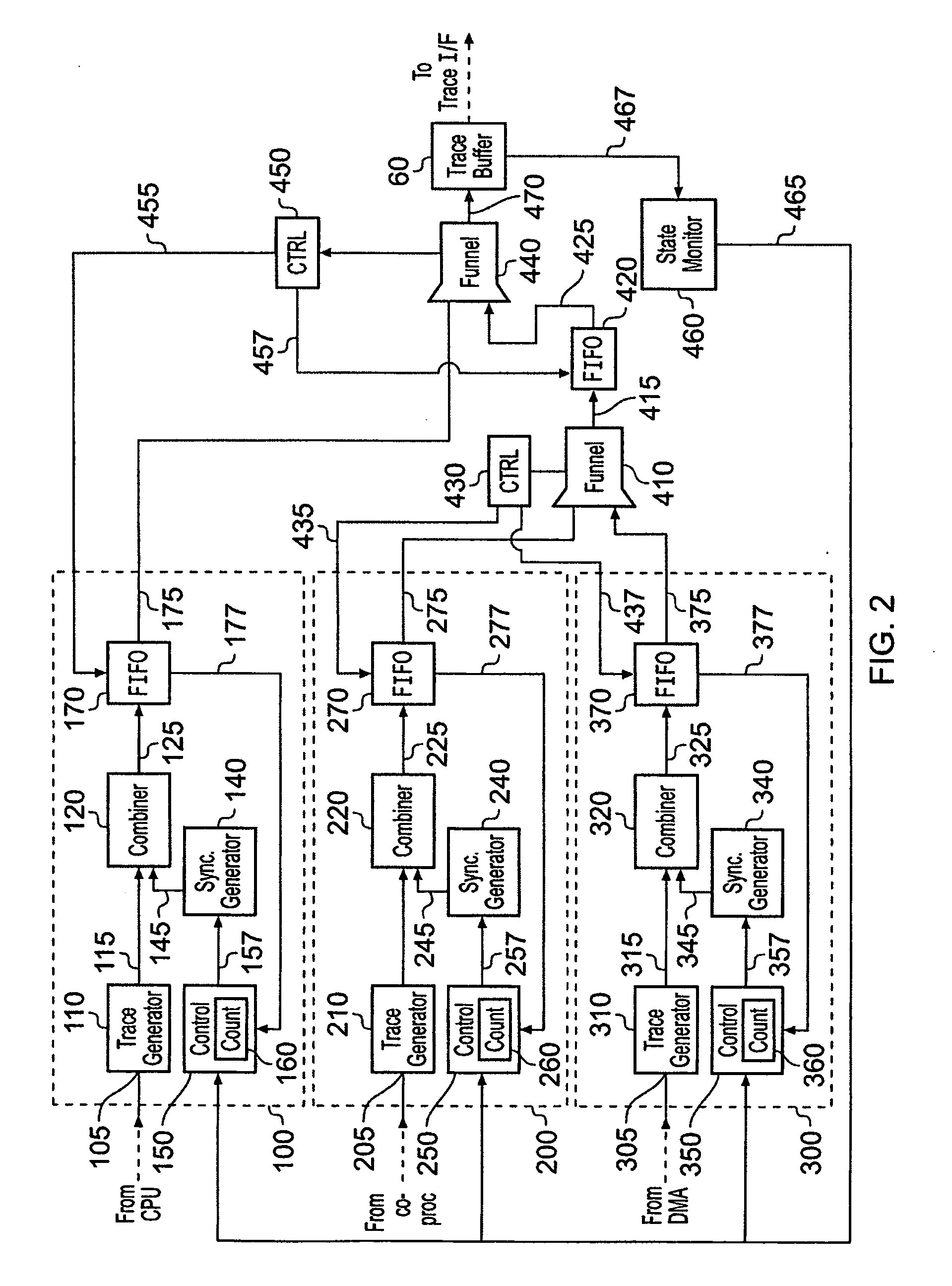Trace synchronization
a trace and data synchronization technology, applied in the direction of instruments, specific program execution arrangements, program control, etc., can solve the problems of data loss conditions within the trace monitoring circuitry of the data processing apparatus, and the amount of trace data generated at a particular time may become large, and achieve the effect of little additional hardware cos
- Summary
- Abstract
- Description
- Claims
- Application Information
AI Technical Summary
Benefits of technology
Problems solved by technology
Method used
Image
Examples
Embodiment Construction
[0079]Referring to FIG. 1, an integrated circuit 1, in this case a system-on-chip circuit, is illustrated. The integrated circuit 1- is coupled to a trace analysis apparatus 2 via a trace interface 3. The trace analysis apparatus may be a general purpose data processing apparatus provided with the necessary software and hardware to connect to the integrated circuit 1 via the trace interface 3, and to perform the required analysis on trace data output from the integrated circuit 1. Trace data generated by the integrated circuit 1 is provided to the trace analysis apparatus 2 via the trace interface 3, and a trace information line 4 connecting the trace analysis apparatus 2 to the trace interface 3.
[0080]The integrated circuit 1 comprises a central processing unit 10, a coprocessor 20, a DMA controller 30, and a memory 40, in this case a random access memory (RAM). The central processing unit 10, the coprocessor 20, the DMA controller 30 and the memory 40 are coupled together via a bu...
PUM
 Login to View More
Login to View More Abstract
Description
Claims
Application Information
 Login to View More
Login to View More - R&D
- Intellectual Property
- Life Sciences
- Materials
- Tech Scout
- Unparalleled Data Quality
- Higher Quality Content
- 60% Fewer Hallucinations
Browse by: Latest US Patents, China's latest patents, Technical Efficacy Thesaurus, Application Domain, Technology Topic, Popular Technical Reports.
© 2025 PatSnap. All rights reserved.Legal|Privacy policy|Modern Slavery Act Transparency Statement|Sitemap|About US| Contact US: help@patsnap.com



